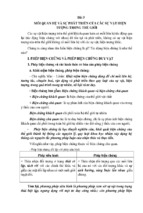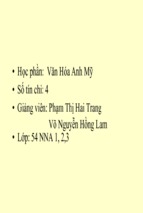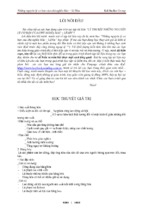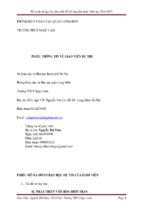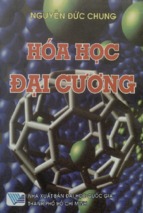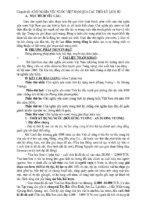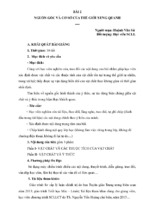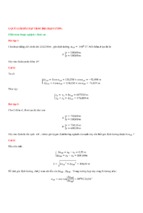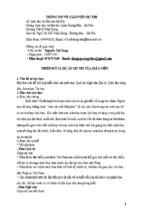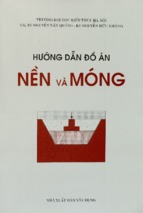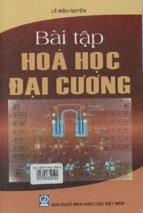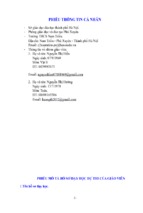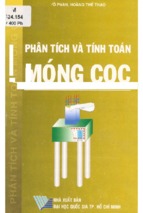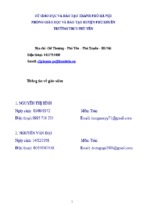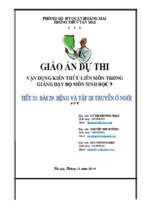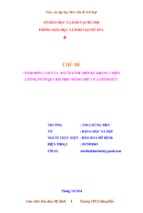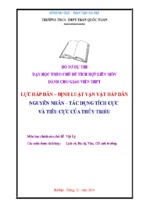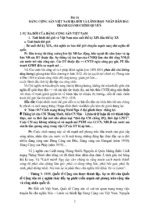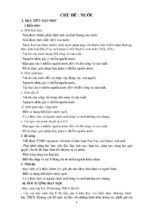Downloaded from ascelibrary.org by RMIT UNIVERSITY LIBRARY on 01/03/19. Copyright ASCE. For personal use only; all rights reserved.
Urbanization Challenges
in Emerging Economies
Resilience and Sustainability
of Infrastructure
Papers from Sessions of the
ASCE India Conference 2017
Edited by
Udai P. Singh and G. L. Sivakumar Babu
New Delhi, India
December 12–14, 2017
Downloaded from ascelibrary.org by RMIT UNIVERSITY LIBRARY on 01/03/19. Copyright ASCE. For personal use only; all rights reserved.
URBANIZATION CHALLENGES IN
EMERGING ECONOMIES
Resilience and Sustainability of Infrastructure
SELECTED PAPERS FROM THE ASCE INDIA CONFERENCE 2017
December 12–14, 2017
New Delhi, India
ORGANIZED BY
American Society of Civil Engineers
CO-SPONSORED BY
Indian Institute of Technology Delhi
Institution of Engineers (India)
EDITED BY
Udai P. Singh
G. L. Sivakumar Babu
Published by the American Society of Civil Engineers
Downloaded from ascelibrary.org by RMIT UNIVERSITY LIBRARY on 01/03/19. Copyright ASCE. For personal use only; all rights reserved.
Published by American Society of Civil Engineers
1801 Alexander Bell Drive
Reston, Virginia, 20191-4382
www.asce.org/publications | ascelibrary.org
Any statements expressed in these materials are those of the individual authors and do not
necessarily represent the views of ASCE, which takes no responsibility for any statement
made herein. No reference made in this publication to any specific method, product, process,
or service constitutes or implies an endorsement, recommendation, or warranty thereof by
ASCE. The materials are for general information only and do not represent a standard of
ASCE, nor are they intended as a reference in purchase specifications, contracts, regulations,
statutes, or any other legal document. ASCE makes no representation or warranty of any
kind, whether express or implied, concerning the accuracy, completeness, suitability, or
utility of any information, apparatus, product, or process discussed in this publication, and
assumes no liability therefor. The information contained in these materials should not be used
without first securing competent advice with respect to its suitability for any general or
specific application. Anyone utilizing such information assumes all liability arising from such
use, including but not limited to infringement of any patent or patents.
ASCE and American Society of Civil Engineers—Registered in U.S. Patent and Trademark
Office.
Photocopies and permissions. Permission to photocopy or reproduce material from ASCE
publications can be requested by sending an e-mail to
[email protected] or by locating a
title in ASCE's Civil Engineering Database (http://cedb.asce.org) or ASCE Library
(http://ascelibrary.org) and using the “Permissions” link.
Errata: Errata, if any, can be found at https://doi.org/10.1061/9780784482032
Copyright © 2018 by the American Society of Civil Engineers.
All Rights Reserved.
ISBN 978-0-7844-8203-2 (PDF)
Manufactured in the United States of America.
Urbanization Challenges in Emerging Economies
iii
Preface
Downloaded from ascelibrary.org by RMIT UNIVERSITY LIBRARY on 01/03/19. Copyright ASCE. For personal use only; all rights reserved.
By the end of the last century the world transitioned from predominantly rural to
equal rural-urban living. Many estimates predict that by year 2050 two thirds of the
world’s population will live in cities due to rapidly increasing rural to urban
migration. This rapid and unplanned migration is having most impact on metropolitan
areas in emerging economies, and is threatening the quality of life for its residents.
Infrastructure in these cities, a key ingredient in quality of life, is not keeping up with
the growth of population.
Civil engineers throughout the world regularly face challenges in building
infrastructure in our quest for sustainable solutions to quality of life issues. The
American Society of Civil Engineers (ASCE), a global leader in sustainable practices
in civil engineering infrastructure, organized a conference “Urbanization Challenges
in Emerging Economies” on 12 to 14 December 2017 in New Delhi, a rapidly
expanding metropolitan area, to facilitate policy, technical, and scientific discussions
and exchanges on these challenges in emerging economies. This conference of civil
engineers, urban architects, policy makers, technology experts, and related
professionals provided a showcase for the latest developments and advancements in
design, construction, technology, and policy related to sustainable infrastructure and
offered a forum to discuss and debate future directions for emerging economies. The
goal was to help these societies move towards resilient sustainable cities and
infrastructure.
Approximately 400 abstracts were received and reviewed by the conference steering
committee and other reviewers. Of these, about 250 technical papers were presented
at the conference. A Book of Abstracts was published and distributed at the
conference. Each full paper underwent peer review by two or three reviewers. As a
result, 151 papers were accepted for publication in the Proceedings. The Proceedings
has been published in two volumes. This volume includes 70 papers, while the other
volume has 81 papers. While some papers present successful case studies and
examples of sustainable infrastructure, others share latest advances in urban
infrastructure planning, design, and construction. In addition, several papers
showcase new tools and latest research to support sustainable urban infrastructure.
The Proceedings contain peer‐reviewed papers from several continents, including
from the west as well as from emerging economies, especially from India. This
volume covers the topic of Resilience and Sustainability of Infrastructure in a
Changing Environment for the Next 100 Years. The papers presented here cover a
diversity of topics, such as sustainable building materials, transport infrastructure,
seismic resilience, lifecycle assessments, sustainable infrastructure ratings and tools,
innovative technologies, smart cities, cyber‐physical systems, climate change
considerations, tools and methodologies, emerging paradigms in urban resilience, etc.
Sustainability is a common thread in this publication.
© ASCE
Urbanization Challenges in Emerging Economies
Downloaded from ascelibrary.org by RMIT UNIVERSITY LIBRARY on 01/03/19. Copyright ASCE. For personal use only; all rights reserved.
The need to use innovative and sustainable solutions and to efficiently use, protect,
and manage our existing resources is paramount to improving quality of life in the
urban environment, especially in emerging economies around the world. We hope
that this publication will be of assistance and use in this effort. Publication of the
peer-reviewed Proceedings has been a team effort. We express our sincere
appreciation to all who made it possible (please see the Acknowledgements page). In
addition, special thanks are due to the India Section of ASCE and to Indian Institute
of Technology Delhi as well as Institution of Engineers (India) for co-organizing the
conference and actively assisting ASCE in the publication of the Proceedings.
Dr. Udai P. Singh, Environmental Consultant, Moraga, California, USA
Prof. G. L. Sivakumar Babu, Professor, Indian Institute of Science, Bangalore, India
© ASCE
iv
Urbanization Challenges in Emerging Economies
Acknowledgments
Downloaded from ascelibrary.org by RMIT UNIVERSITY LIBRARY on 01/03/19. Copyright ASCE. For personal use only; all rights reserved.
Conference Chair and Lead Editor
Dr. Udai P. Singh, Moraga, California, USA
Track Chair and Editor
Prof. G. L. Sivakumar Babu, Bangalore, India
Reviewers of Technical Papers
Prof. G. L. Sivakumar Babu, Bangalore, India
Prof. Rajib Mallick, Worcester, Massachusetts, USA
Prof. Ananth Ramaswamy, Bangalore, India
Prof. Bharathi Ganesh, Bangalore, India
Prof. Edward H. Wang, Xinfeng, Taiwan
Dr. Anjaneyappa, New Delhi, India
Prof. K. Chandrashekhar Iyer, New Delhi, India
Prof. K.S. Nanjunda Rao, Bangalore, India
Dr. Vilas S. Mujumdar, Vienna, Virginia, USA
Dr. B. Munwar Basha, Hyderabad, India
Er. Satish K. Vij, New Delhi, India
Dr. Ajit Sabnis, Bangalore, India
Prof. Amit Srivastava, Gurgaon, India
Er. Sughosh P., Bangalore, India
Er. Chaitra Purushothama, Bangalore, India
Prof. Meera Raghunandan, Mumbai, India
Prof. Prathima Bhat, Bangalore, India
Prof. M. R. Pranesh, Chennai, India
Er. Aravind Salecha Chetan, Bangalore, India
Prof. L. G. Santosh, Bangalore, India
Prof. Sireesh Saride, Hyderabad, India
Prof. D. Nagesh Kumar, Bangalore, India
Dr. Udai P. Singh, Moraga, California, USA
ASCE Staff
© ASCE
Ms. Angie Lander, Reston, Virginia, USA
Ms. Meggan Maughan‐Brown, Reston, Virginia, USA
v
Urbanization Challenges in Emerging Economies
Downloaded from ascelibrary.org by RMIT UNIVERSITY LIBRARY on 01/03/19. Copyright ASCE. For personal use only; all rights reserved.
Contents
A Comparative Study of Masonry Units for Energy Efficient Building
Construction with Focus on Thermal Comfort with a Case Study ......................................... 1
Riya Anna Abraham and P. Laxman Kudva
A Modeling Approach to Construction Waste Management ................................................ 11
Swarna Swetha Kolaventi, T. P. Tezeswi, and M. V. N. Siva Kumar
A Review of Partial Safety Factor and Recommendation for Construction
Load Combined with Dead Load............................................................................................ 21
Mahesh V. Bhatti and Rajesh S. Londhe
A Review on the Performance of Additives in Warm Mix Asphalt ...................................... 31
Devulapalli Lekhaz, Sarang Goutham, and K. Saravanan
A Study on Seismic Performance of a Century Old Large Elevated Steel
Water Reservoir at Kolkata .................................................................................................... 40
Sandip Maity, Gokul Mondal, Amitava Pal, and Biswajit Som
Advanced Techniques in Railroad and Highway Engineering: Highway
and Railroad Tunnel Life Cycle Cost Analysis (LCCA) ........................................................ 53
Avinash Prasad, Purnima Prasad, and Indira G. Prasad
Analysis for Tendency of Cracking on Expressway Pavement ............................................. 63
Shun Araki, Naoki Susaki, Akihiro Tanaka, Kengo Obama,
and Kiyoyuki Kaito
Assessment of Socio-Economic Impacts of PMGSY Roads Using Fuzzy
Multi-Criteria Decision Making Tool ..................................................................................... 71
Makrand Wagale, Ajit Pratap Singh, and A. K. Sarkar
Behavior of Traditional Lime Concrete Weak Floor Diaphragm System
in Unreinforced Masonry Building......................................................................................... 80
Sohini Som, Partha P. Biswas, P. K. Dhua, and Biswajit Som
Characterization of Steel Fiber Reinforced Pervious Concrete for
Applications in Low Volume Traffic Roads ........................................................................... 93
Avishreshth, Prem Pal Bansal, and Tanuj Chopra
Comparison of 3D and 2D Site-City Interaction Effects on Building
Response and Free Field Motion under Double Resonance Condition ............................... 103
Neeraj Kumar and J. P. Narayan
Concept Drift Based Analysis of Climatic Impact on Design of Green Buildings .............. 113
Charu Puri, Amit Rawal, and Naveen Kumar
© ASCE
vi
Urbanization Challenges in Emerging Economies
Downloaded from ascelibrary.org by RMIT UNIVERSITY LIBRARY on 01/03/19. Copyright ASCE. For personal use only; all rights reserved.
Determination of Minimum Slab Thickness of RCC Slab in Order to
Prevent Undesirable Floor Vibration Phenomena ............................................................... 121
M. M. Orvin and K. M. Amanat
Determination of Optimum Parameters of Porous Concrete for Adequate
Strength and Permeability .................................................................................................... 129
Mayank Gupta, Lupesh Dudi, Rahul Karkhanis, and Veerendra Kumar
Developing a Sustainable Building Assessment Tool (SBAT) for Developing
Countries—Case of India...................................................................................................... 137
A. Suchith Reddy, P. Anand Raj, and P. Rathish Kumar
Development of Earthquake Readiness Index Tool to Assess Individual
Earthquake Preparedness Level ........................................................................................... 149
S. Kolathayar, S. A. Anupa, and E. Lalith Prakash
Disaster Preparedness Index: A Valid and Reliable Tool to Comprehend
Disaster Preparedness in India ............................................................................................. 156
V. R. Rohith, S. Kolathayar, K. Priyatham, V. Karan Kumar, and S. Nikil
Effect of Confinement on P-M Interaction Curve for RC Columns and
Comparative Study of the Effect on Different Size of Square Columns ............................. 164
Deepak H. Solanki and Rajesh S. Londhe
Effect of Steel Industry Waste as a Cement Replacement to Produce
Sustainable Concrete Considering Strength and Durability ............................................... 172
Damyanti G. Badagha and C. D. Modhera
Effect of Water Content on Relative Flow Area and Hence Predicted
Flow Values of Controlled Low Strength Materials ............................................................ 184
T. Raghavendra, B. C. Udayashankar, M. Lokeshwari, M. Vikas,
and N. Amaranath Reddy
Effect on Permeability of Concrete Made with Successive Recycled
Aggregate and Silica Fume ................................................................................................... 196
Deepankar K. Ashish and Surender K. Verma
Response of Square and Plus Shaped Buildings on Varying Wind Loads .......................... 206
Ritu Raj, Akshay Sharma, and Siddharth Chauhan
Efficient Utilization of Construction and Demolition Waste in Concrete ........................... 216
N. K. Dhapekar and S. P. Mishra
Evaluation of Energy Efficient Sustainable Walling Material ............................................ 227
Hindavi R. Gavali, Shashi Ram, and Rahul V. Ralegaonkar
© ASCE
vii
Urbanization Challenges in Emerging Economies
Downloaded from ascelibrary.org by RMIT UNIVERSITY LIBRARY on 01/03/19. Copyright ASCE. For personal use only; all rights reserved.
Experimental Investigation on Durability of Soil Reinforced with
Sustainable Fibers Subjected to Wet-Dry Cycles................................................................. 234
P. Shekhawat, N. Shrivastava, and S. Shrivastava
Experimental Investigations on Building Derived Materials in
Chemically Aggressive Environment as a Partial Replacement for
Sandy Soil in Ground Improvement .................................................................................... 244
Shreyans R. Surana, Arkamitra Kar, Anasua GuhaRay,
Ashok Kumar Suluguru, and M. Jayatheja
Feasibility Analysis of Carbon Equivalence Accounting for Construction
Materials Using Computational Approach .......................................................................... 255
S. Bharath, Vishakha Sakhare, and Rahul Ralegaonkar
Framework for Ranking of Infrastructure in Cities Based on Utility
Services .................................................................................................................................. 263
Novnit Kashyap and Sudhir Misra
Fusion of Traditional and Modern Principles of Design for Public
Spaces of Indian Cities .......................................................................................................... 275
Gaurav Gangwar
Generating Site-Specific Ground Motions for Delhi Region for Seismic
Vulnerability Assessment of Buildings—Promoting Disaster
Resilient Communities .......................................................................................................... 290
M. C. Raghucharan and Surendra Nadh Somala
Identification of Plant Species for Development of Green Belt in
Thiruvananthapuram City ................................................................................................... 300
A. M. Harees, Reshma S. Kumar, K. Swarnalatha, and Binu Sara Mathew
Impact of Heavy Metal on Reactor Performance and Biomass
Morphology of Sequencing Batch Reactors ......................................................................... 308
Rajneesh Kumar, Gurvinder Kaur Saini, and Mohammad Jawed
Impact of Urbanization on Climate Change in Delhi NCR Due to Land
Use Changes .......................................................................................................................... 321
Poonam Kumari and Arvind Kumar Nema
Influence of Superplasticizer and Alkali Activator Concentration on
Slag-Flyash Based Geopolymer ............................................................................................ 330
M. S. Laskar and S. Talukdar
Infrastructure Project Formulation: A Comprehensive Approach .................................... 338
D. Bishawajeet, B. Surendra, and G. Mridul
© ASCE
viii
Urbanization Challenges in Emerging Economies
Downloaded from ascelibrary.org by RMIT UNIVERSITY LIBRARY on 01/03/19. Copyright ASCE. For personal use only; all rights reserved.
Investigations on Stone Matrix Asphalt Using Construction Demolition
Waste as Partial Replacement to Coarse Aggregates for Sustainable Roads ..................... 345
Shivkumar, Narayana Harish, Sukomal Mandal, and Ramappa Prabhakara
Life Cycle Assessment of Metropolitan Solid Waste Management
Infrastructure for Resilient City: Navi Mumbai.................................................................. 354
Hasan Rameez, Navneet Rai, Vikas Varekar, and Harshit Mishra
Life Cycle Assessment of Buildings with Supplementary Materials ................................... 366
Shreyans R. Surana, J. S. Kalyana Rama, and Sridhar Raju
Life-Cycle Cost Analysis of Brick Kiln Dust Stabilized Perpetual
Pavements for Lowering Greenhouse Gas Emissions in India ............................................ 377
Gaurav Gupta, Hemant Sood, and Pardeep Kumar Gupta
Low-Damage Seismic Design of RC Buildings with Supplemental Energy
Dissipation Systems ............................................................................................................... 391
Swanand Patil and Pankaj Agarwal
Mechanical Properties of Different Types of Concrete under Triaxial
Compression Loading ........................................................................................................... 403
Fatemeh Heidarnezhad, Khashayar Jafari, Vahab Toufigh,
and Mohsen Ghaemian
Microbial Concrete as a Sustainable Option for Infrastructural
Development in Emerging Economies .................................................................................. 413
Sandip Mondal and Aparna (Dey) Ghosh
Modification of Wind Pressure Distribution on Tall Buildings Due to
Variation in Height of the Interfering Building ................................................................... 424
Bharat S. Chauhan and Ashok K. Ahuja
Nano-Particle Coated Natural Fiber Impregnated Soil as a Sustainable
Reinforcement Material ........................................................................................................ 435
Sanandam Bordoloi, Deepak Patwa, Rojimul Hussain, Ankit Garg,
and S. Sreedeep
Parametric Study of Steel Slag Powder as Cementitious Material on
Cement Mortars .................................................................................................................... 445
Richa Palod, S. V. Deo, and G. D. Ramtekkar
Perception Mapping for Community Readiness of Urban Core Localities
in Disaster Management—Case Study of Kolkata............................................................... 452
Shrabana Das
Performance of Energy Dissipation Devices in Mitigation of Blast-Induced
Vibration of Buildings ........................................................................................................... 464
Deepak Kumar Sahu and Sanjaya Kumar Patro
© ASCE
ix
Urbanization Challenges in Emerging Economies
Downloaded from ascelibrary.org by RMIT UNIVERSITY LIBRARY on 01/03/19. Copyright ASCE. For personal use only; all rights reserved.
Policy Issues in Affordable Housing Made with Bamboo Reinforced
Structural Component .......................................................................................................... 475
Vishal Puri and Pradipta Chakrabortty
Potential Use of E-Plastic Waste in Concrete ....................................................................... 484
M. L. Sankarshan, Shrihari K. Naik, M. V. Deepthi,
and S. D. Anitha Kumari
Pozzolanic Properties of Binary and Ternary Cementitious Blends ................................... 491
Vasudha D. Katare, Sagar Patil, Dhiraj Mahajan,
and Mangesh V. Madurwar
Predictive Modeling for Infrastructure System Engineering .............................................. 502
Ojas Vora, Pankaj Vora, and Urjaswala Vora
Recent Developments in Life Cycle Assessment and Service
Life Prediction: A Review ..................................................................................................... 509
Subbarao Yarramsetty, M. V. N. Sivakumar, and P. Anand Raj
Resilience Based Earthquake Design of Buildings: Current Practice,
Problems, and Opportunities in Indian Scenario ................................................................ 521
Harish K. Mulchandani and G. Muthukumar
Review on the Use of Industrial and Agricultural By-Product for
Making Sustainable Concrete ............................................................................................... 530
Vishvanath N. Kanthe, Shirish V. Deo, and Meena Murmu
Rutting Potential of Gap Graded Warm Mix Asphalt with Higher
Percentage of Crumb Rubber ............................................................................................... 539
K. Sai Kubair, Shreyans R. Surana, M. Venkata Sai Krishna,
Sridhar Raju, and V. Vinayaka Ram
Rutting Potential of Half Warm Asphalt Mixture Using Polymer
Modified Bitumen Emulsion ................................................................................................. 549
Katla Bhanuprasad, Prateek Agarwal, Sridhar Raju,
and V. Vinayaka Ram
Seismic Hazard Analysis for Proposed Smart City, Ludhiana, India:
A Deterministic Approach .................................................................................................... 560
S. Naval, K. Chandan, and D. Sharma
Seismic Resilience of Aging Bridges in India ....................................................................... 571
B. Sharanbaswa and Swagata Banerjee
Smart Self Drilled Micropile Foundation Solution and Seismic
Performance in Fine Sand Strata ......................................................................................... 582
Suhas E. Tayade and Sandip Vasanwala
© ASCE
x
Urbanization Challenges in Emerging Economies
Downloaded from ascelibrary.org by RMIT UNIVERSITY LIBRARY on 01/03/19. Copyright ASCE. For personal use only; all rights reserved.
Study on Performance of Glass Waste in Concrete ............................................................. 591
T. S. Thulasidhar Naidu, M. V. Deepthi, Shrihari K. Naik,
and S. D. Anitha Kumari
Sustainability Assessment of Concrete Mixtures for Pavements
and Bridge Decks .................................................................................................................. 598
Krishna R. Reddy, Erin Yargicoglu, Mustapha Ibrahim, and Girish Kumar
Sustainable Streetscape: Case of Lake Street in Downtown
Oak Park, Illinois, USA ........................................................................................................ 610
Krishna R. Reddy, William Bakos, Brian Doubek, and Girish Kumar
SWIM—An Asset Centric ICT Solution for Water Management
by Utilities—A Step toward Smart Cities ............................................................................ 619
Akash Sondhi and Rakesh Tiwari
Topology Optimization of Diagrid Structures Using Differential
Evolution ............................................................................................................................... 632
S. Gowre Manookare and A. Vasan
Towards Seismic Resilient Bridges on an Urban Mass Rapid
Transport Network ............................................................................................................... 645
Rajeev Kumar Garg, Kashif Quamar Inqualabi, and K. Balaji Rao
Understanding Resilience and Sustainable Urban Growth through
Land Use Simulation: Case Study of Emerging Metrocity of India .................................... 657
M. C. Chandan, J. Dharini, and H. A. Bharath
Understanding the Economic Implications of the Collection Phase
of a Conventional Indian Sewerage System: A Life-Cycle Analysis ................................... 670
Naushita Sharma and Bakul Rao
Use of Different Types of Aggregate vis-a-vis Demolition Waste as
an Alternate Material for Concrete ...................................................................................... 679
M. F. Akhtar, M. W. Naqvi, M. Masroor Alam, and M. Shariq
Verification of Discharge Carrying Capacity of Existing Stormwater
Drain Using New IDF Curves—A Case Study of Vadodara Airport .................................. 691
Nayana D. Mathasoliya and Sanskriti S. Mujumdar
Wind Loads on Multi-Span Mono-Slope Canopy Roof ....................................................... 702
Neelam Rani and Ashok Kumar Ahuja
© ASCE
xi
Urbanization Challenges in Emerging Economies
A Comparative Study of Masonry Units for Energy Efficient Building Construction with
Focus on Thermal Comfort with a Case Study
Riya Anna Abraham1 and P. Laxman Kudva2
Downloaded from ascelibrary.org by RMIT UNIVERSITY LIBRARY on 01/03/19. Copyright ASCE. For personal use only; all rights reserved.
1
4th Year (B.Tech), Dept. of Civil Engineering, Manipal Institute of Technology, Manipal,
Karnataka 576 104, India. E-mail:
[email protected]
2
Assistant Professor (Sr. Scale), Dept. of Civil Engineering, Manipal Institute of Technology,
Manipal, Karnataka 576 104, India. E-mail:
[email protected]
ABSTRACT
The modern world demands environment friendly, energy efficient designs along with
economic building materials in the construction industry, which are key to sustainable buildings.
This paper, through a case study conducted at Manipal region of Karnataka, India, compares and
quantifies the thermal efficiencies of concrete, mud, and laterite on transmission loss/gain rate
values with reference to the envelopes (exterior walls) of the building. The necessary data
sampling for computation was done during the summer months of March and April 2017,
involving parameters of thermal transmittance (U-value), thermal resistance (R-value), and
thermal conductivity (K-value) pertaining to the construction materials comprising the walls
along with temperature (internal and external) of various rooms in the building. The work
summarizes the relationship between these parameters, transmission loss/gain rate, as well as the
thermal efficiency. In conclusion, the study demonstrates that laterite is the optimum masonry
unit for building construction in tropical regions such as South India.
INTRODUCTION
Due to the initiative of green buildings, people around the world look out for building
materials that can be thermally efficient and can result in low cooling and heating charges. Also,
a reduction in the electricity and fossil fuel consumption (in some cases) will occur if energy
efficient materials are used. However, there is very little to no published quantifiable evidence
that assesses the efficiency and energy consumption and for residential buildings with the
context of green building standards. In absence of such evidence, a subjective evaluation of the
green building technologies and their contributions to the energy use reduction will remain
unlikely. In the past few decades, tremendous efforts have been put into the development and
research of improved building systems and technologies with an aim of advancing energy
efficiency and reducing energy consumption. In the residential building market, within the last
four years in the United States of America, more than 32,000 homes have been constructed using
energy-efficient building technologies (Dong Zhaoa et al. 2016).
With the increasing demand for sustainable development and green buildings it is inevitable
to consider better building materials for construction. This paper brings out a comparison
between the most commonly used buildings units in tropical regions like south India namely
Concrete blocks, Laterite blocks and Mud blocks. Since the temperature in these regions are
almost always higher than the comfort conditions (between 24 to 26 degrees Celsius) and ranges
to about 37°C as recorded during the study, therefore buildings adopt air conditioning. Here a
comparison has been drawn out based on the heat gain/ loss rate for these materials under a
prevailing interior comfort condition.
© ASCE
1
Urbanization Challenges in Emerging Economies
Downloaded from ascelibrary.org by RMIT UNIVERSITY LIBRARY on 01/03/19. Copyright ASCE. For personal use only; all rights reserved.
TRANSMISSION LOSS/ GAIN
The building envelope comprises roofs, floors and walls as well as doors and windows. It is
the building envelope that separates the varying conditions inside the building from the
conditions prevailing outside the building. To do this, the envelope must control the flow of heat
energy, air movement, moisture penetration, and solar heat.
The building systems must overcome the energy loads that are imposed by the climatic
conditions outside the building to maintain required conditions inside the building space, and
also, energy loads that are imposed by a number of factors inside the building itself. The building
systems must consume purchased energy, which includes fossil fuels but in usual cases
electricity, to offset these internal and external energy loads.
The difference in temperature between the outdoor and indoor temperatures causes
transmission of heat energy through the solid components of the building envelope. The amount
of energy required to maintain a suitable environment within the building space is significantly
impacted by the materials used in the building envelope. Building walls composed primarily of
steel and glass are a major source of heat gain in the summer and heat loss in the winter. Walls
consisting of masonry, cladding and insulation, have much higher insulating capabilities and
substantially more thickness.
HEAT LOSSES AND HEAT GAINS
Materials of various properties have different thermal conductivities of energy, and are
compared on the basis of R-values (thermal resistance), U-values (thermal transmittance) and
K-values (thermal conductivity). The U-value identifies the extent of a material to conduct
thermal energy. For example, aluminum has a much higher U-value when compared to wood and
hence, a greater thermal conductivity. Rigid insulation has a higher R-value than glass and,
therefore, a greater thermal resistance or insulating capability (Module 9: Energy Efficiency in
Building Electrical Systems) R-values and U-values are used in heat flow calculations.
The R-value is the corresponding rate of thermal resistance.
1
R
U
If there are multiple materials (say three) involved in the envelope, then the cumulative Uvalue of the envelope can be calculated by
1
U
R1 R 2 R3
Thermal conductivity, which is denoted using the Greek symbol λ or K- value, is the measure
of how easily heat flows through a specific material. Unlike U and R values, it is independent of
the thickness of the material and is measured in Watts per meter Kelvin (W/m K) or W/m°C
(Watts per meter degree Celsius).
The lower the thermal conductivity of a material, the better is the thermal performance (i.e.
the slower heat will move across the material).
The relation between K-value and R-value is given by:
R L/ K
L- Thickness of the material (m)
The heat loss or gain through a particular building component (roof, window, door or wall) is
calculated utilizing the following equation:
© ASCE
2
Urbanization Challenges in Emerging Economies
Downloaded from ascelibrary.org by RMIT UNIVERSITY LIBRARY on 01/03/19. Copyright ASCE. For personal use only; all rights reserved.
Q U A T 2 T1
Q - Heat loss/ gain rate (W)
U - Thermal Transmittance (W/m2°C)
A - Surface area (m2)
T2 - Temperature indoor (°C)
T1 -Temperature outdoor (°C)
The heat gain or heat loss factor is dependent on point of reference. Temperature flows from
the higher to lower end. If the reference is with respect to the region with lower temperature
separated by a wall then the system is undergoing heat gain whereas if the region is at a higher
temperature end heat loss occurs. Therefore a negative or positive Q value indicates the direction
of heat flow.
Heat flow rate is a measure of the rate at which heat flows through the wall. Higher the value
of heat flow rate, higher is the rate at which transfer of heat occurs over the two surfaces on
either side of the wall. A lower value of heat flow indicates that the heat flow through the wall
would take longer and hence maintaining lower temperature in the internal surface if internal
temperature is lower than the external temperature.
METHODOLOGY
The case study was on Academic Block 5 (AB5) at Manipal Institute of Technology,
Manipal campus and analyses the heat loss/ gain rate occurring for the building during MarchApril 2017. A variation in the heat loss/ gain for materials: Concrete blocks, Laterite blocks and
Mud blocks are done adopting a comfortable room temperature of 25̊ C, the comfort condition
for buildings shall not exceed 26̊ C (Indian Green building council 2011).
Figure 1: Plan of the Academic block 5
This building mostly consists of classrooms with a few faculty cabins and laboratories. The
building was divided in two sides namely right and left for easier reference. Figure 1 depicts the
plan of the building and the either sides - right and left depicted by R and L respectively. It has
© ASCE
3
Downloaded from ascelibrary.org by RMIT UNIVERSITY LIBRARY on 01/03/19. Copyright ASCE. For personal use only; all rights reserved.
Urbanization Challenges in Emerging Economies
an asymmetric layout on the basis of the number of floors on either side i.e., lower ground level
two to third floor and lower ground level 1 to fifth floor on the right and left sides respectively.
The building is located in the southern part of Karnataka State, India, a place well known for
buildings constructed with Laterite blocks. Also, since undressed Laterite blocks, Mud blocks
and Concrete blocks have comparable costs of Rs 35, Rs 40 and Rs 37 respectively per block, a
comparative experiment was carried on the thermal efficiency of these materials which is
quantified by heat loss/ gain rate of the walls, calculated from the corresponding R-values of
these materials. The paper aims to quantify how the heat loss/ gain varies for if the already
existing Concrete blocks are replaced by Laterite blocks and Mud blocks. The transmission loss/
gain through the walls in various rooms of the building under consideration is studied during
March-April 2017, along with.
The first step was to acquire the plans and sections of various floors in the building followed
by selection of the rooms on either sides of the building facing different directions. The next step
involved manual measurements of the external temperature T1. All dimensions including floor
height, number of windows, window dimension, and length of exposed wall (exterior wall) were
taken from the sections and plans of various floors.
The area of exposed walls of the various rooms were calculated next. The variation that
occurs by the usage of Laterite blocks or Mud blocks in the wall for the building in place of
Concrete blocks (which already exists) was carried out.
This was followed by calculation of the cumulative U-values for the wall sections. The
building consists of tempered glass windows of 10 mm thickness The U-values were calculated
and the corresponding heat gain was computed using the equations. The values of transmission
loss/ gain obtained was then compared to conclude on the thermal efficiency of the materials.
CASE STUDY
The various rooms in the building has been indicated using room numbers and the area of the
exposed wall has been calculated from the data acquired from the plans of the building as shown
in Table 1. A total of 32 rooms of different exposed wall areas were considered for data
collection and all have a floor height of 4.5m (wall and window areas were calculated
accordingly). A table constituting of 8 records out of the total 137 records have been shown for
illustration purpose.
Table 1: Wall and Window area for various classrooms under consideration
Room ID Total ength Window Window Window Window
Total
Wall
Exposed
Count
Type
Length Area (m2) Area (m2) Area (m2)
(m)
L0S1(E&C)
10.085
2
W2
4.5
9
45.3825 36.3825
L1S1(I&C)
17.125
3
W2
4.5
13.5
77.0625 63.5625
L2 202
12.575
2.5
W2
4.5
11.25
56.5875 45.3375
L3 304
12.55
2.5
W2
4.5
11.25
56.475
45.225
L4 406
12.562
2.5
W2
4.5
11.25
56.529
45.279
L5 505
15.475
2,2
W3,W2
2,4.5
13
69.6375 56.6375
LG01LH12
14.75
3
W2
4.5
13.5
66.375
52.875
LG02LH03
8.11
1
W1
0.75
0.75
36.495
35.745
© ASCE
4
Downloaded from ascelibrary.org by RMIT UNIVERSITY LIBRARY on 01/03/19. Copyright ASCE. For personal use only; all rights reserved.
Urbanization Challenges in Emerging Economies
The various components required for calculations and their corresponding U, K and R values
are depicted in Table 2 (Module 9: Energy Efficiency in Building Electrical Systems), (Alausa
S.K et al. 2013). The cumulative U values were calculated using these R values for a particular
wall section. The walls are cavity type comprising of Concrete blocks of 200 mm with a cavity
of 200 mm in between, resulting in a total wall thickness of 600 mm. For all calculations, an
external and internal air film was considered. For cladding, hollow bricks have been used with
cladding present on floors −2, −1 and 0 on the right side of the building and −1, 0 and 1 floors on
the left side of the building. Cladding brick consist of two 17 mm brick sections on either sides,
16 mm brick section sandwiched between two air gaps of 30 mm.
Table 2: Materials and their corresponding R, U and K values
Material
K-Value
Thickness (mm)
R-Value
U-Value
2
(W/m/°C)
(m °C/W)
(W/m2°C)
Mud block
0.620
200
0.322
3.1055
Concrete block
1.025
200
0.195
5.128
Laterite block
0.523
200
0.3824
2.615
Air spaces
–
At least 12 mm
0.171
5.84
Internal air film
–
–
0.120
8.33
External air film
–
–
0.030
33.33
Mud brick
0.88
16
0.01818
55.005
Mud brick
0.88
17
0.0193
51.813
Tempered glass
0.056
10
0.178
5.61
Calculation of thermal transmittance value for walls with cladding in case of the already
existing Concrete blocks is given by the inverse of the sum of R-values of various components
are as shown in Table 3.
Table 3: Calculation of thermal transmittance of wall with cladding
Material
R-value (m2°C/W)
Internal air film
0.12
Concrete block 200mm thick
0.195
Air gap 200mm thick
0.171
Concrete block 200mm thick
0.195
Brick −17mm thick
0.0193
Air gap of 30mm thick
0.171
Brick 16mm thick
0.01818
Air gap of 30mm thick
0.171
Brick 17mm thick
0.193
External air film
0.03
Sum = 1.10978
Thermal transmittance of the wall with cladding = 1/R = 0.901 W/m2°C
Calculation of the thermal transmittance value for walls without cladding in case of the
already existing Concrete blocks is given by the inverse of the sum of R-values of various
components (refer table 4) and in case of window sections refer table 5.
© ASCE
5
Downloaded from ascelibrary.org by RMIT UNIVERSITY LIBRARY on 01/03/19. Copyright ASCE. For personal use only; all rights reserved.
Urbanization Challenges in Emerging Economies
Table 4: Calculation of thermal transmittance of wall without cladding
Material
R-value (m2°C/W)
Internal air film
0.12
Concrete block 200mm thick
0.195
Air gap 200mm thick
0.171
Concrete block 200mm thick
0.195
External air film
0.03
Sum = 0.711
Thermal transmittance of the wall without cladding = 1/R = 1.4064 W/m2°C
Table 5: Calculation of thermal transmittance of window
Material
R-value (m2°C /W)
Internal air film
0.12
Tempered glass (10mm thick)
0.178
External air film
0.03
Sum = 0.328
Thermal transmittance of the window = 1/R = 3.0487 W/m2°C
RESULTS
The same set of calculations was carried out for cases of Laterite blocks and Mud blocks
replacing Concrete blocks for the wall section (all blocks considered are equivalent in thickness,
200 mm). The resulting simulated results of cumulative U values are depicted in Table 6.
Table 6: U values obtained for replacement of Concrete blocks with Laterite blocks and
Mud blocks
Material and wall section
U-value (W/m2°C)
Laterite blocks with cladding
0.6735
Laterite block without cladding
0.9209
Mud block with cladding
0.7327
Mud block without cladding
1.0351
Figure 2: Recorded temperature and heat loss/ gain rate for Laterite blocks, Mud blocks
and Concrete blocks
© ASCE
6
Urbanization Challenges in Emerging Economies
Downloaded from ascelibrary.org by RMIT UNIVERSITY LIBRARY on 01/03/19. Copyright ASCE. For personal use only; all rights reserved.
The internal temperature is set to 25°C and the wall and window areas for each room is
considered with reference to Table 1. A part of the recordings have been shown in Figure 2.
The graphs shown in Figure 3, Figure 4, Figure 5, Figure 6, Figure 7, Figure 8 and Figure 9
show how the heat loss/ gain varies for various materials at different temperatures for a given
wall area range for the building under consideration.
Figure 3: Variation of heat loss/ gain rate in case of classrooms with an exposed wall area
of 29.8485 m2, for Concrete block, Laterite block and Mud block
Figure 4: Variation of heat loss/ gain rate in case of classrooms with an exposed wall area
of 36.495 m2 for Concrete block, Laterite block and Mud block
Figure 5: Variation of heat loss/ gain rate in case of classrooms with an exposed wall area
in the range 45.3825 m2 to 47.925 m2, for Concrete block, Laterite block and Mud block
© ASCE
7
Downloaded from ascelibrary.org by RMIT UNIVERSITY LIBRARY on 01/03/19. Copyright ASCE. For personal use only; all rights reserved.
Urbanization Challenges in Emerging Economies
Figure 6: Variation of heat loss/ gain in case of classrooms with an exposed wall area in the
range 56.475 m2 to 56.646 m2, for Concrete block, Laterite block and Mud block
Figure 7: Variation of heat loss/ gain rate in case of classrooms with an exposed wall area
in the range 60.75 m2 to 69.637 m2, for Concrete block, Laterite block and Mud block
Figure 8: Variation of heat loss/ gain rate in case of classrooms with an exposed wall area
in the range 73.0625 m2 to 90.3375 m2, for Concrete block, Laterite block and Mud block
From the above Figures we may conclude that the Laterite blocks have low heat loss/ gain
rate values compared with Concrete blocks and Mud blocks. However, Mud blocks prove to
have a lower rate than Concrete blocks. A maximum difference in heat loss/ gain rate of Laterite
and Mud blocks was found to be 392.368 W for an exposed wall area of 100. 2375 m2 and the
average difference between the two materials was 124.784 W. Thus Laterite blocks are capable
of maintaining a cooler internal temperature in comparison with these materials, followed by
Mud blocks and then Concrete blocks.
© ASCE
8

